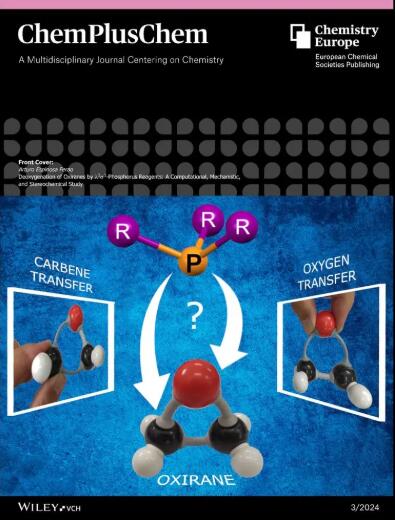外电场如何使N2O成为强氧化剂。
IF 3
4区 化学
Q2 CHEMISTRY, MULTIDISCIPLINARY
引用次数: 0
摘要
本文采用动力学和量子化学计算方法,研究了外电场(EEF)对氧化力的影响。我们以氮气氧化烯烃(乙烯和环己烯)为原型,验证了EEF的有效性。研究表明,选择合适方向的电场可显著降低反应势垒。定量地,我们发现EEF催化反应的速率与裸反应相比可高达~ 13个数量级。本文章由计算机程序翻译,如有差异,请以英文原文为准。
How an External Electric Field Makes Nitrous Oxide (N2O) a Potent Oxidizing Agent.
The present work investigates the impact of the external electric field (EEF) on the oxidizing power of N2O, by employing kinetics and quantum chemical calculations. This study has taken the oxidation of olefin (ethene and cyclohexene) by N2O as a prototype to demonstrate the effectiveness of EEF. The investigation suggests that the reaction barrier is significantly reduced by choosing an electric field in an appropriate direction. Quantitatively, this study finds that the rate of EEF-catalyzed reaction can be as high as ≈13 orders of magnitude compared to the bare reaction.
求助全文
通过发布文献求助,成功后即可免费获取论文全文。
去求助
来源期刊

ChemPlusChem
CHEMISTRY, MULTIDISCIPLINARY-
CiteScore
5.90
自引率
0.00%
发文量
200
审稿时长
1 months
期刊介绍:
ChemPlusChem is a peer-reviewed, general chemistry journal that brings readers the very best in multidisciplinary research centering on chemistry. It is published on behalf of Chemistry Europe, an association of 16 European chemical societies.
Fully comprehensive in its scope, ChemPlusChem publishes articles covering new results from at least two different aspects (subfields) of chemistry or one of chemistry and one of another scientific discipline (one chemistry topic plus another one, hence the title ChemPlusChem). All suitable submissions undergo balanced peer review by experts in the field to ensure the highest quality, originality, relevance, significance, and validity.
 求助内容:
求助内容: 应助结果提醒方式:
应助结果提醒方式:


